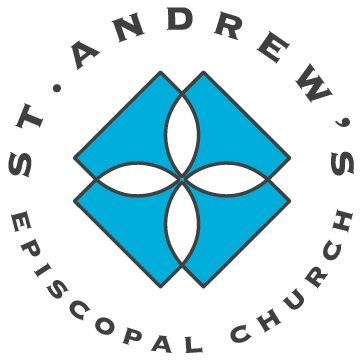August 24, 2014
/Pentecost – Proper 17
Exodus 1:8 – 2:10; Psalm 124; Romans 12: 1- 8; Matthew 16: 13 – 20
THE REV. JAMES M.L. GRACE
In the Name of God: Father, Son, and Holy Spirit. AMEN.
While in college, a good friend of mine and I spent about two weeks backpacking our way through Europe. We travelled by train, beginning our journey in Paris, and ending up in Rome. In Rome one day I remember calling my mother from a pay phone (this was long before cell phones were common place). During our conversation, I shared with her that from the phone booth I was standing in, I could see the dome of St. Peter’s in Vatican City.
Those of you who have visited St. Peter’s know how large it is. When I visited it again several months ago, I found myself getting lost in the baroque architecture, and rather than marveling at its beauty, I began to feel that it was over the top – it was too much. I later shared my discomfort about St. Peter’s being so ornate with Paul Fromberg, suggesting that the church reminded me a bit of the Liberace Museum in Las Vegas, to which Paul replied, “Jimmy, the Liberace Museum is much more tasteful than St. Peter’s.”
I still find it odd that such an ornate building is named for a simple, rugged, fisherman, named Peter, who became one of Jesus’ first disciples. Peter was not his original name, it was a nickname given to him by Jesus. Peter’s original name was Simon, and Simon lived in a town close to the Sea of Galilee called Caesarea Philippi, a good place for a fisherman to live. Near the city of Caesarea Philippi was a deep cave - not a man cave – they didn’t have recliners and flat screen televisions back then. Deep inside this cave, people at the time believed, was the birthplace of the Greek God Pan, whom the Greeks considered to be a God of Nature. This belief was so strong, the Caesarea Philippi was originally called Panias – the birthplace of Pan. But the cave was not this city’s only claim to fame. Within Caesarea Philippi there was also a large temple of solid white marble built by Herod the Great, the Roman king of Judea.
This large ornate temple was built not to honor the god Pan, but another person whom many at that time considered to be god-like – the Roman Emperor. It was Herod the Great’s grandson, Philip, who added on to this temple, and in the process of doing so, conveniently changed the name of the town from Panias to Caesarea, which basically means “Caesar’s town.” Phillip also added his own name to the town, designating it Caesarea Philippi to distinguish it from other nearby towns which were also called “Caesarea.”
So it is here at Caesarea Phillip, in the shadow of a great marble temple to honor an Emperor and in the midst of an ancient cave rumored to be the birthplace of a god, that Jesus asked Simon, “who do you think I am?” to which Simon replied “you are the Messiah.” That word Simon used, Messiah, is a Hebrew word that means “the anointed one.” In the Old Testament, “messiah” refers to any person who was anointed king of Israel, such David or Solomon. The Greek equivalent of Messiah is Christos, or in English, “Christ.” The name Jesus Christ, simply means Jesus, the messiah, or Jesus, the anointed one. Simon was one of the first to understand this – that Jesus was God’s anointed son.
It was here that Jesus gave Simon his nickname: “Petros” or Peter. The word petros means rock, and it is here that Jesus says to Peter, you are the rock, the one upon which the church will be built. Because Peter was the first, according to the Bible, to recognize who Jesus was, he in a sense became the first member of the church. It all starts with Peter.
Peter recognized that in the face of Jesus, he saw the eyes of God in a simple human being. No marvelous grand temple. No mysterious cave. Just a person, but a person unlike any Peter had ever seen. It was a momentous realization for Peter to make, and perhaps that realization in part was used to justify such a large church in Rome.
But we miss the point of this story, if we think it is all about Peter. Because it is not. The story is about you. Because the moment you, like Peter, stare into the face of Jesus and see the eyes of God, and you realize who Jesus is, that’s the moment when Jesus gives you a new name, when he calls you “Petros” a rock – and like Peter, you are the rock upon which Jesus builds his church. Not a church of fancy buildings or slick branding, but a church of the heart – a church that finds grace in suffering, and peace in adversity. You become the church for the world.
AMEN.

